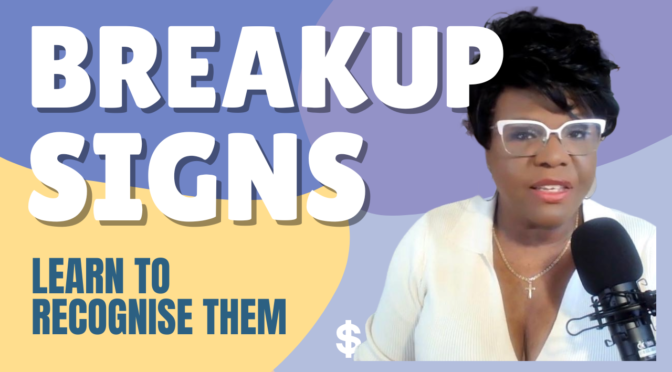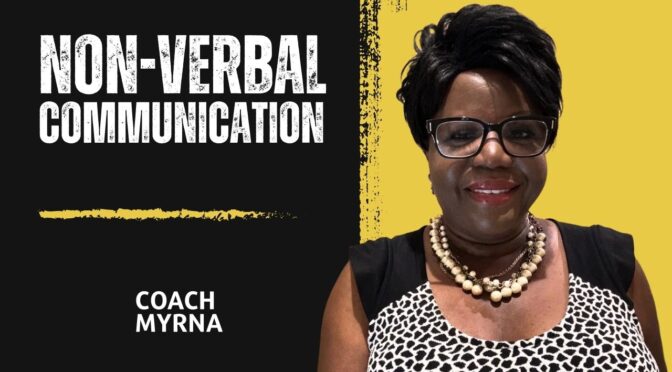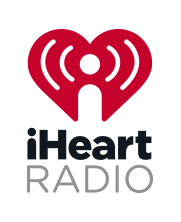Coach Myrna explores the breakup signs that signal the end of a relationship. In this episode of “Five Minute Fridays.” she delve into the importance of communication, recognizing emotional and physical distancing, and understanding how increased individualism and constant criticism can erode the bond between partners. Learn how feelings of relief in a partner's absence, breakdowns in trust, and changes in future planning serve as red flags. Gain insights on prioritizing self-worth and personal happiness while navigating relationship challenges.
Download the Podcast Here:
Key Takeaways
-
Relationship breakdowns and breakup signs often begin with a decline in communication, leading to misunderstandings and emotional distance.
-
Emotional and physical detachment, as well as an increase in individuality, can indicate that partners are drifting apart.
-
Trust and honesty are the bedrocks of any relationship; their erosion can signify deeper issues that need immediate attention.
https://www.youtube.com/watch?v=GfYFTc31RFk
Breakup Signs # 1: Diminished Communication and Its Implications
Communication forms the foundation for mutual understanding and growth in any healthy relationship. Both parties need to feel comfortable expressing their feelings, thoughts, and needs openly. When open communication dwindles, misunderstandings arise, leading to feelings of disconnect and dissatisfaction and is the first breakup sign.
“Arguments may become more frequent, often over small issues that usually would be insignificant. This stage is often characterized by the feeling of walking on eggshells.”
This crystallizes the idea that when communication falters, even minor disagreements can snowball into larger, unresolved conflicts. Moreover, the balance between independence and interdependence is pivotal. Relationships thrive on a mix of both.
“A healthy relationship encourages both individual growth while maintaining a shared life. Overdependence or neglect of personal growth can lead to suffocation, whereas excessive independence might make the relationship feel non-existent.”
Emotional and Physical Distance
Breakup Signs # 2 The Widening Emotional Gap
Emotional connection serves as a keystone in sustaining a relationship. A weakening emotional bond can manifest in various ways:
“You may find yourself sharing less about your individual lives and conversations might seem superficial like how was your day, what's the weather like.”
This distance leads to feelings of isolation and neglect, signifying a growing detachment in the relationship and one of the breakup signs.
Breakup Sign # 3: Physical Intimacy: The Litmus Test
Physical touch and affection are often the most noticeable aspects when evaluating the health of a relationship. The lack of physical intimacy can be the biggest red flag:
I am always surprised when I hear about a husband asking his wife for a divorce and she is surprised and his response is. “I haven't touched you in years!” That is a sign right there, the number one indication that your relationship is ending when there's no physical touch or affection.
When partners no longer seek each other out for physical comfort or intimacy, it signifies a significant rift.
Sign # 4: Preference for Solitude
A decline in quality time spent together can also heavily impact the relationship:
“If your partner increasingly prefers to spend time alone or with others instead of you, it signifies a widening gap in your relationship.”
The break from shared moments further amplifies isolation and neglect, contributing to an emotional and physical divide that becomes harder to bridge over time.
Trust, Honesty, and Increased Individuality
Sign # 5: The Erosion of Trust
Trust is the bedrock upon which any strong relationship is built. When trust is compromised, the relationship's foundation is jeopardized:
“Breakdown in trust and honesty is another big one. Trust forms the bedrock of any strong relationship. If you find that trust erodes in your relationship, it's a sign that things are not in the best shape.”
Trust issues could manifest as lying, hiding things, or becoming excessively suspicious.
Honesty as the Counterpart to Trust
A relationship where partners can't be honest with each other is likely heading towards a crisis:
“Honesty goes hand in hand with trust. A relationship where partners can't be honest with each other is likely heading towards a crisis.”
Frequent lying erodes the partnership, creating a toxic dynamic that is detrimental to both emotional well-being and the longevity of the relationship. It is one of the top breakup signs.
Sign # 6 Increasing Individuality
While personal growth is essential, an excessive focus on individuality over shared activities can be harmful:
“While maintaining individuality is crucial for a healthy relationship, an increased focus on personal activities and interests over shared ones could be a red flag.”
When partners continuously prioritize personal time over shared moments, it might signify a growing individualism that can further alienate partners, making the relationship feel more like a solitary commitment than a shared journey.
Breakup Sign #7 Constant Criticism
Constant criticism and lack of appreciation can create a hostile environment within a relationship. When complaints and criticism outnumber compliments and appreciation it can build up negative feelings in resentments. The relationship begin to feel more like a battleground than a Haven. Feeling like you can't do anything right is another major sign of an impending breakup. Constant criticism can result in diminish self-esteem and overall feeling of inadequacy this toxic dynamic harms not only your relationship but also your well-being.
Sign # 8 Absence does not make yoir heart grow fonder.
Feelings of relief in your partner's absence. There's no bigger sign a relationship is ending, if you feel better when you're not around. You know the saying “absence makes the heart grow fonder.” So if your partner's absence is making your heart feel lighter that's a sign that you need to be aware of. Don't just let it slide by put it into your your mental Consciousness. Feeling happier or more relaxed when your partner is not around can be a glaring sign that something is wrong. This indicates that the relationship has become more stressful than comforted and the partner's absence is perceived as a relief.
Breakup Sign # 9 Too much interdependence
The balance between Independence and interdependence is especially crucial. A healthy relationship encourage both individual growth while maintaining a shared life. Overdependence or neglect of personal growth can lead to suffocation whereas excessive Independence might make the relationship feel non-existent. I remember there's one time of a friend of mine told me about this married couple that always take vacations separately. They never go on vacations together, now that's too much interdependence.

Breakup Sign # 10 Decrease in quality time together
A decrease in quality time spent together also points towards a growing distance. He's home but he's in the basement or doing something on the computer and you guys never together spend any quality time together. In the beginning of the relationship you would cuddle up and watch TV and and then all of a sudden now he doesn't want anything don't want any part of that. If your partner increasingly prefers to spend time alone or with others instead of you it, it is a sign the relationship is ending.
Important Reflections
Navigating the complex emotions and practicalities of recognizing when a relationship is coming to an end is tough. The decline in communication, emotional and physical distance, and the erosion of trust each serve as significant indicators. To address these issues, open conversations are crucial. Seeking professional help like couples counseling can also offer effective pathways to either reconcile differences or prepare for an amicable separation.
Every relationship will face its unique challenges, and knowing these signs helps one to be better prepared. Understanding one's self-worth and prioritizing personal happiness should be the primary focus when navigating these deeply personal waters. Frequent check-ins and maintaining open communication can prevent many of these signs from escalating into irreversible issues.

Conclusion
Relationships are intricate, involving layers of emotional, physical, and intellectual interdependence. Being aware of the signs that signal a relationship's end allows for a proactive approach in addressing issues. Communication remains key, ensuring trust and emotional connection remain intact. Prioritize understanding and openness to navigate the complexities of any emotional partnership.
Thank you for tuning in to this insightful episode of “Transform Your Mind to Transform Your Life” with Coach Myrna. Your journey towards a better understanding of your relationships can begin today. Namaste.
Resources:
-
Coach Myrna's Facebook: Transform Your Mind to Transform Your Life
-
LinkedIn: Coach Myrna
-
Instagram: @coachmyrna
-
YouTube Channel: Coach Myrna – Transform Your Mind






